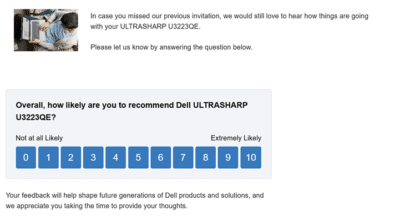At most companies, customer support is about retaining customers while keeping costs down. So you are pushed towards self-service options (online/phone) OR customer support is out-sourced altogether.
I share two examples – one good and one bad to illustrate how to use email to build loyalty. Especially if you cannot fulfill the customer’s request.
The BAD Example
This was from a Financial services startup – very similar to Mint, but focusing on Investments. Here was my original question.
My Email: Portfolio within Investing, I see a chart in the Holdings tab. that compares me (YOU) against Dow, S&P etc. What is it comparing? What is the basis for the squiggly line?
Reply 1: 5 Days Later
Thank you for your email. You index is the performance of all the publicly traded holding and the vertical line is the performance of your holdings against the the benchmarks or the indexes.
I then followed up with a question.
“What does performance mean?”
Reply 2: 15 Days after follow-up email
Term performance is used in context of how your holdings are performing (are they profitable or losing money).
That’s all. No context or further explanation. I could have googled this myself. And more importantly, no context as to what time-period is being used.
Takeaway: I can expect leisurely, brief and somewhat useful responses even for basic elements that are displayed prominently. Will this improve if I become a paying customer? Not sure.
The GOOD Example
I had a much more challenging issue. I could not use an email address I had used previously to sign up on Mint.com.
Mint’s answer was useful, detailed and personable. The actual answer is below.

Using it in your own system
Here’s a template to follow:
DO:
- Provide a short, personable greeting.
- Rephrase the question to show your understanding
- Directly answer the issue
- Provide context if necessary
- Provide a timeline, if there is one
- If no timeline is available, be clear and honest – better to annoy them, then to lose their trust
DON'T:
- Don’t give a vague or non-answer
- Don’t try and dance around the problem – you will lose trust
Try this for a month on your customer support emails and you’ll see happier customers and happier support staff.
Subscribe below to get subscriber-only content, guides and templates.





Comments
Comment policy: We love comments and appreciate the time that readers spend to share ideas and give feedback. However, all comments are manually moderated and those deemed to be spam or solely promotional will be deleted.